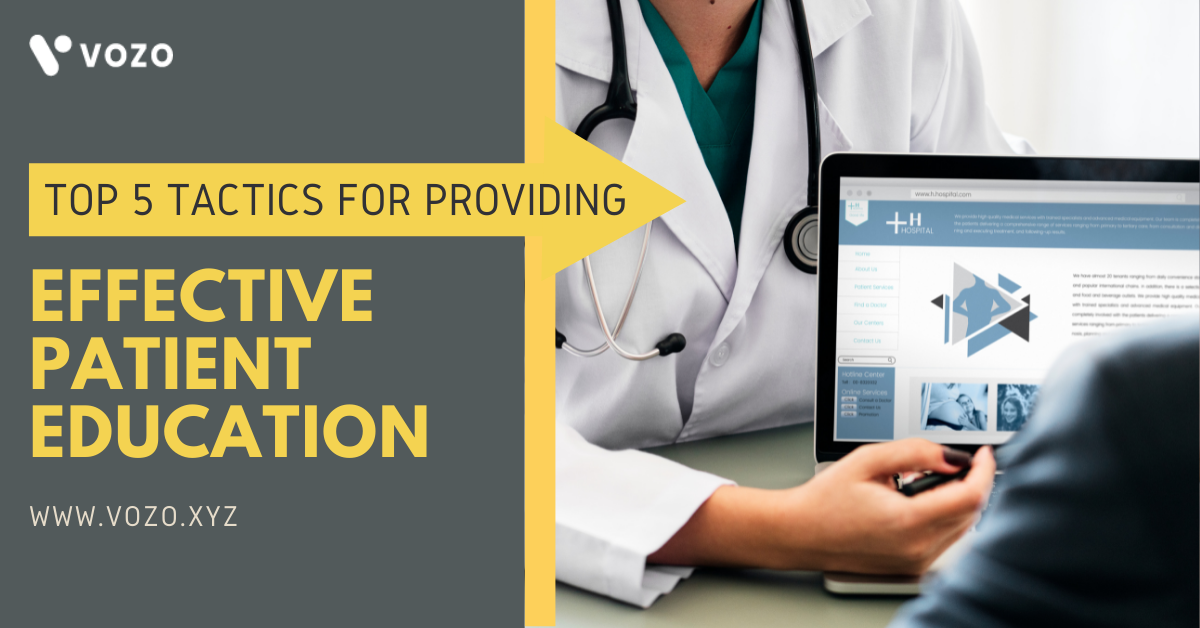Top 5 Tactics For Providing Effective Patient Education
Patient education was once a job for physicians, but today’s nurses assume most of the responsibility for educating patients and helping them to become responsible for their own health status. For patients to take a proactive role in their own care, they need to comprehend their condition and work to prevent or minimize complications from any chronic illnesses.
Patient education needs to be comprehensive and easily understood. Nurse health educators must recognize that many patients are lacking in their inability to understand health care information and what they need to do with that information.
Tips to improve patient education
Preventing re-hospitalization is a huge responsibility, especially in consideration of costly penalties that are levied for early readmissions. To accomplish this, nurses need to constantly improve patient teaching and education prior to discharge. Some of the things nurses can do to advance patient education include:
Delegate more responsibilities to support staff and be more focused on patient education.
Begin educating patients with every encounter from admission.
Find out what the patient already knows. Correct any misinformation.
Feed patients information in layman’s terms. Utilize visual aids as often as possible.
Question their understanding of the care, and plan for the next lesson.
Use return demonstration when administering care. Involve the patient from the very first treatment.
Ask the patient to tell you how they would explain (step-by-step) their disease or treatment to their loved one.
Make sure the patient understands the medications as you administer them. Make sure they understand how and when to refill medications.
Provide patients with information about signs and symptoms of their condition that will require immediate attention.
READ MORE: Top 8 Challenges In Improving Patient Engagement
Top 5 tactics for patient education success
Teaching patients is an important aspect of nursing care. Whether teaching a new mom how to bathe a newborn baby or instructing an adult who is living with a chronic heart disease, a successful outcome depends on the quality of the nurse’s instruction and support. Consider these five strategies.
1. Take advantage of educational technology
Technology has made patient education materials more accessible. Educational resources can be customized and printed out for patients with the touch of a button. Make sure the patient’s individualized needs are addressed. Don’t simply hand the patient a stack of papers to read, review them with patients to ensure they understand the instructions and answer questions that arise. Some resources are available in several languages.
2. Determine the patient’s learning style
Similar information may be provided by a range of techniques. In fact, providing education using different modalities reinforces teaching. Patients have different learning styles so ask if your patient learns best by watching a DVD or by reading. A hands on approach where the patient gets to perform a procedure with your guidance is often the best method.
3. Stimulate the patient’s interest
It’s essential that patients understand why this is important. Establish rapport, ask and answer questions, and consider specific patient concerns. Some patients may want detailed information about every aspect of their health condition while others may want just the facts, and do better with a simple checklist.
4. Consider the patient’s limitations and strengths
Does the patient have physical, mental, or emotional impairments that impact the ability to learn? Some patients may need large print materials and if the patient is hearing impaired, use visual materials and hands on methods instead of simply providing verbal instruction. Always have patients explain what you taught them. Often people will nod “yes” or say that they comprehend what is taught even if they have not really heard or understood. Consider factors such as fatigue and the shock of learning a critical diagnosis when educating patients.
READ MORE: Texting Patients: When & How To Do It Right?(A Secret Guide)
5. Include family members in health care management
Involving family members in patient teaching improves the chances that your instructions will be followed. In many cases, you will be providing most of the instruction to family members. Families play a critical role in health care management.
Teaching patients and their families can be one of the most challenging, yet also rewarding elements of providing nursing care. First-rate instruction improves patient outcomes dramatically.
Get Started With Vozo Practice Management Solutions
Looking for an EHR Solution for your healthcare practice? Look no further than Vozo EHR. Our cloud-based EHR solution benefits both providers and patients.
Vozo EHR helps providers streamline and automate administrative tasks and encourages them to focus more on better patient care. With a vast range of features and benefits of Vozo EHR:
Our telehealth platform enables Patients to care remotely without the need for in-person visits and reduces the cost of practice and patients.
With appointment scheduling, patients can easily schedule appointments with healthcare providers easily reduces the wait time.
Connect with healthcare providers conveniently via video call, chat, online messaging, etc without the need to consult providers in person.
A cost-effective subscription plan benefits healthcare providers of all sizes.
Vozo EHR can be the backbone of all your healthcare practice needs and requirements.
Vozo EHR helps you to navigate all the potential challenges and provides exceptional service and technical support to make sure you have no burden.
Reach out to Vozo and Empower the Best EHR solution for your healthcare practice.
About the author

With more than 4 years of experience in the dynamic healthcare technology landscape, Sid specializes in crafting compelling content on topics including EHR/EMR, patient portals, healthcare automation, remote patient monitoring, and health information exchange. His expertise lies in translating cutting-edge innovations and intricate topics into engaging narratives that resonate with diverse audiences.













